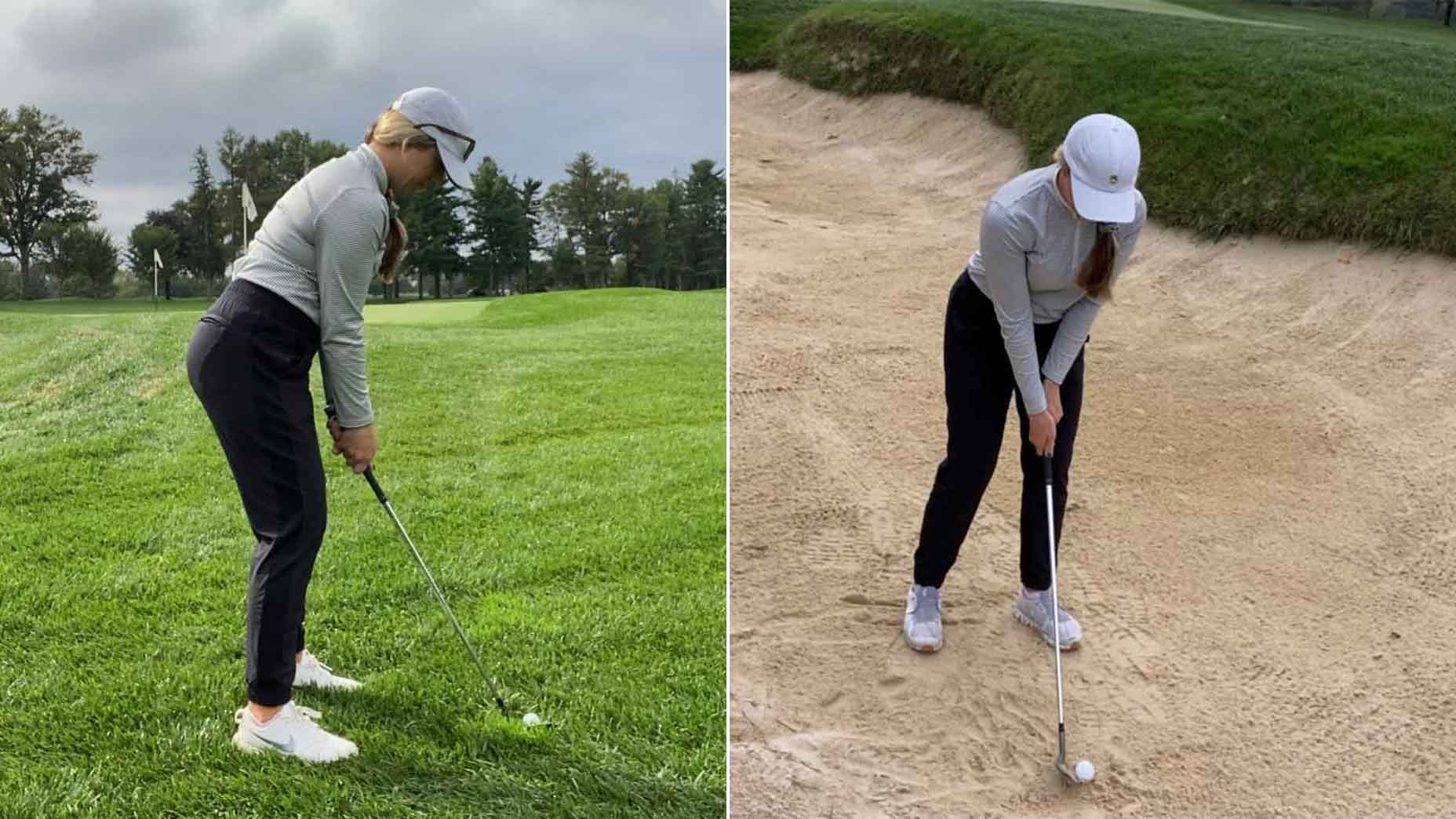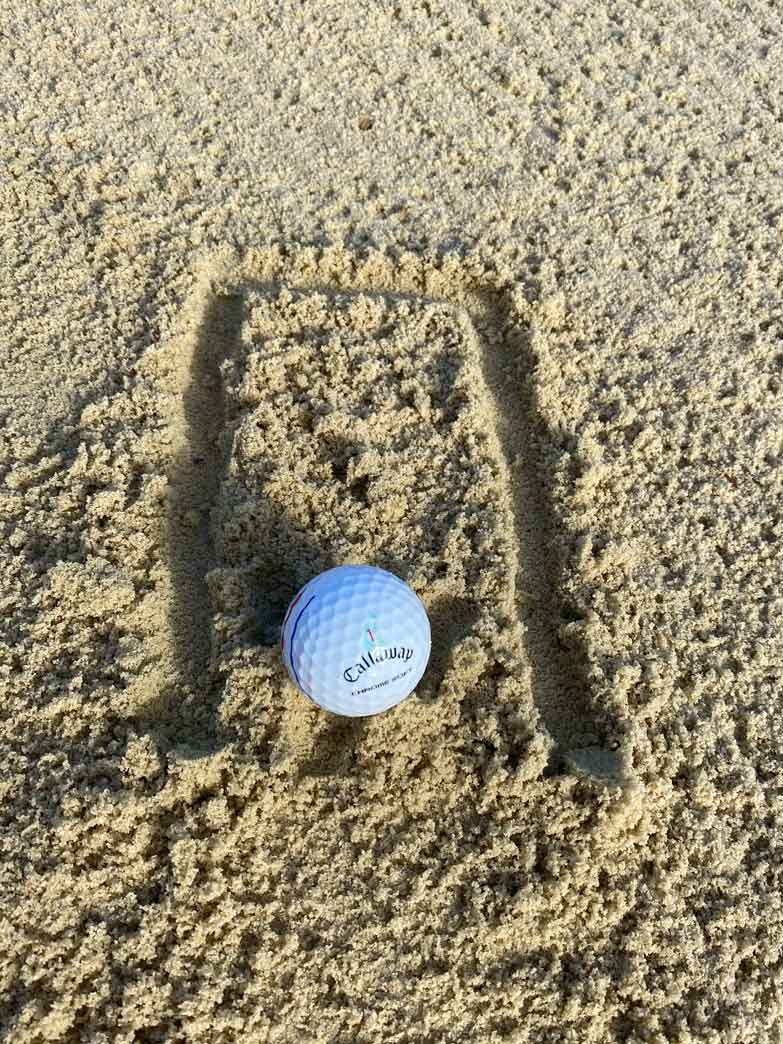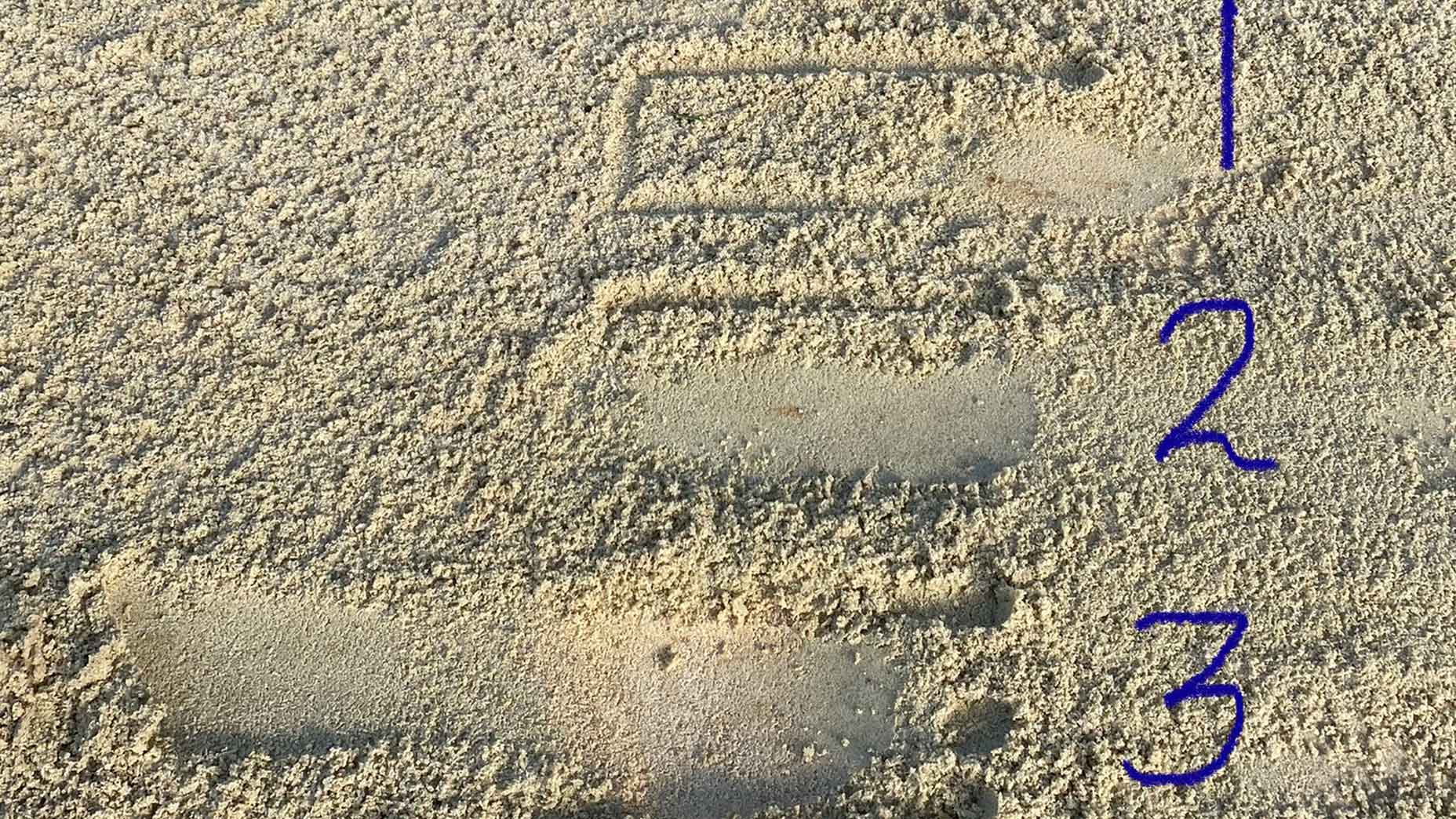
Use the rough and the sand to practice hitting the ground when you swing.
Abby Mann
Overcoming a fear or apprehension of hitting the ground can be a major obstacle for beginners and seasoned golfers alike. Many perfectionists, or simply extremely neat people, hate making a mess on the turf. Those who have had previous wrist or hand injuries, too, are hesitant and obviously don’t want to be hurt again. Both feelings are understandable, but hitting the ground actually uses the golf club in the correct way, promotes center contact, and allows the ball to launch high into the air.
To gain confidence and become comfortable hitting the ground, try these two new areas of practice rather than feeling frustrated at the driving range.
Go in the sand
Hitting the sand is less intimidating due to its soft, forgiving texture and visible feedback. Bunkers are also a good spot to practice because the immediately show where divot is occurring and the sound of the club hitting the sand provides an audible check-in as well.

Abby Mann
Try this drill:
In a practice bunker, make a small tee out of the sand and place the ball on top of the tee.
Draw a dollar-bill sized rectangle on the target side of the golf ball. (See photo at right).
Using a high-lofted club, like a sand wedge or pitching wedge, hit as many golf balls with a full, smooth tempo swing (no small swings here!) and see if any of the following applies to you:
- Clubhead is hitting just the ball and not the tee or rectangle.
- Clubhead is hitting the ball and sand tee first and then the rectangle, while a normal balanced finish position with the club and body is achieved
- Clubhead is hitting the ball and tee while almost getting stuck in the sand. A full finish cannot be completed due to the depth of the divot.

Abby Mann
The ideal shot is No. 2, where the clubhead hits the sand tee and ball first, directly followed by the rectangle with a light thump or bouncing noise. The club does not stick in the sand after the ball and it should not feel like an incredibly fast or powerful swing. The club should hit the sand enough to lose some energy, but also allow the player to have a tall, balanced finish, as if they were hitting off of the fairway.
Once you gain confidence from the sand, try a few shots from the rough.
If your practice area does not allow you to hit out of the rough with a full swing, using a chipping area and small swing is still helpful. The main goal to get the ball out of the rough is to swing the club at a downward angle, aiming to hit the root of the grass below the golf ball. This downward angle and hitting below the ball is more comfortable in longer grass since less precision is required. There is no scooping or lifting motion and the player can learn to hit the ball out of a lie in the longer grass without slowing down.
The energy from the swing should feel like it is transferring to the ground and not just the golf ball. In the practice swing, notice if the club is hitting the ground and taking a divot or grazing the top of the grass. Remember: go for the root!
Utilizing the driving range, bunker, and rough to practice is a solid game plan to improve contact and accuracy with irons, and train yourself to finally take that divot.
Abby Mann is the Player Development and Teaching Professional at Aronimink Golf Club in Newtown Square, Pa.









